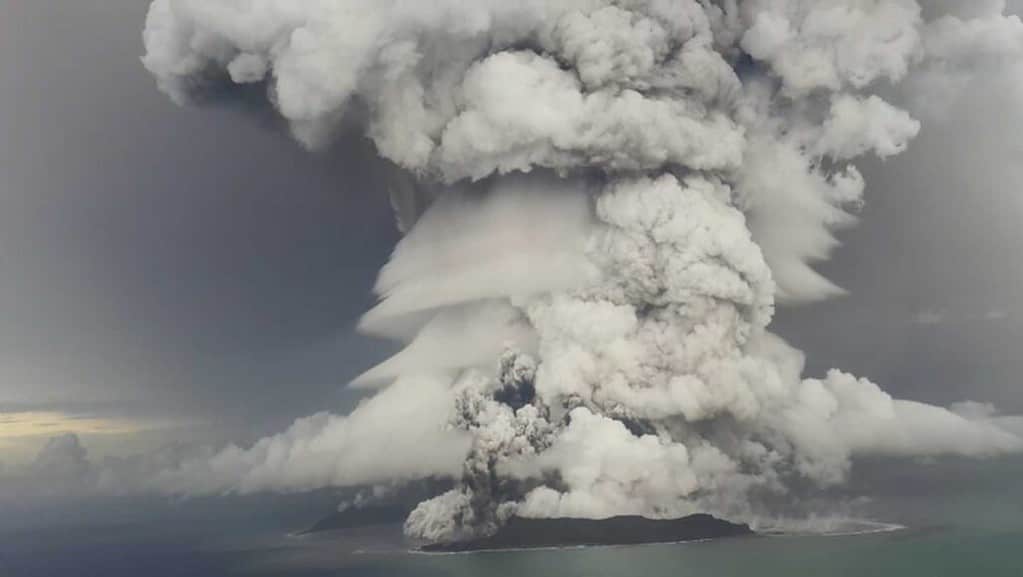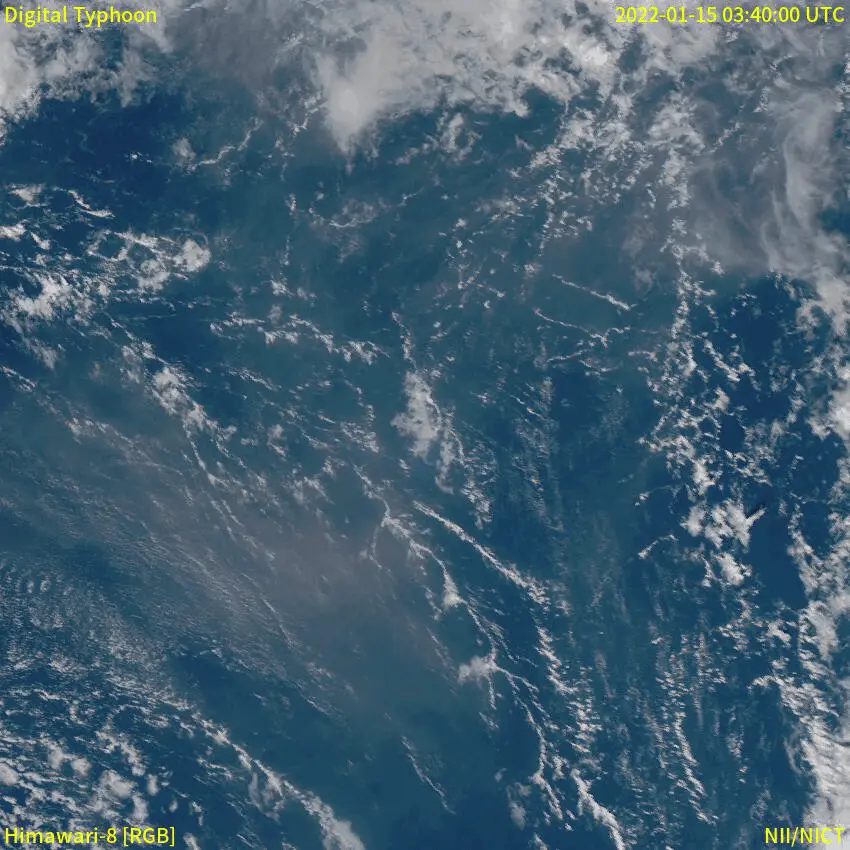
When Hunga Tonga-Hunga Ha’apai, a submarine volcano located in the Tongan Archipelago, erupted in January 2022, it created one of the most massive natural explosions in over a century. The force unleashed by the eruption was greater than the explosion of the largest U.S. nuclear weapon, with a force equivalent to 15 megatons of TNT.
According to a recent study published in Science Advances, the eruption generated a 45-meter (148 feet) high tsunami along the coast of Tonga’s Tofua Island and waves up to 17 meters (56 feet) on Tongatapu, the country’s most populated island.
Mega eruption, mega tsunamis
Led by scientists from the University of Miami Rosenstiel School of Marine, Atmospheric, and Earth Science and the Khaled bin Sultan Living Oceans Foundation, the study used a combination of satellite imagery, drone mapping, and field observations to analyze the event.
“We realized immediately that the event which had just occurred in Tonga was of such a large magnitude that it was unique in the modern era,” Sam Purkis, a marine geoscientist at the University of Miami Rosenstiel School of Marine, Atmospheric, and Earth Science, told ZME Science.
They found that the complex shallow bathymetry in the region acted as a low-velocity wave trap, capturing a more than hour-long tsunami with waves up to 85 meters (279 feet) high one minute after the initial explosion.
“So fierce was the eruption, it easily rivals Krakatoa in 1883,” Purkis told me, referring to the massive eruption of a caldera volcano in the Sunda Strait between the islands of Java and Sumatra in Indonesia, which killed over 36,000 people.
The power of the tsunami was nothing short of awe-inspiring, dwarfing those that hit Japan during the devastating 2011 earthquake and tsunami, which were estimated to have been about 40 meters (131 feet) high.
In 2022, researchers at the University of Bath in the UK also found the Tonga eruption caused shockwaves in our atmosphere to circle the globe at least six times and accelerate to the fastest speeds ever recorded in our atmosphere: 320 meters per second (720 miles per hour).
And even though it is submerged underwater, Tonga’s Hunga Tonga-Hunga Ha’apai volcano produced a plume that extended 57 kilometers (35 miles) up into the atmosphere — more than any other volcano ejection in history.


Averting a catastrophe
But despite its sheer size and duration, the tsunami caused few casualties. How is that possible? The scientists point to three main factors: the location of the eruption, the COVID-19 pandemic, and increased awareness and preparedness efforts in Tonga leading up to the event.
“Whereas the death toll from Krakatoa exceeded 36,000 lives, only a small number of people were lost to this 2022 tsunami,” Purkis said.
“Tonga should be commended on its disaster preparedness. Surely that is the main factor that prevented a truly calamitous humanitarian disaster on Jan. 15th, 2022.”
But don’t get too comfortable yet. Other submarine volcanoes in the area have the potential to produce future tsunamis of the same scale. Submarine volcanoes are much harder to monitor than volcanoes on land, whose fumes can easily be tracked with the naked eye. This makes underwater volcanic eruptions quite unpredictable and double trouble.
“Obscured from casual view, submarine volcanoes are much harder to monitor than volcanoes on land. Our study provides a guide as to the behavior of submarine volcanos in the run-up to a tsunami-generating explosion. We show how a series of small blasts hailed the arrival of the “big one” which generated the largest tsunami,” Purkis said.
“These findings advocate that strategically placed acoustic and seismic detectors are likely an effective means of keeping tabs on submarine volcanos.”
The eruption of the Hunga Tonga-Hunga Ha’apai volcano was a natural laboratory for testing hypotheses and models that can help improve disaster preparation efforts. By studying the aftermath of this event, we can better understand similar eruptions and tsunamis in the future and better prepare for their devastating impact.


